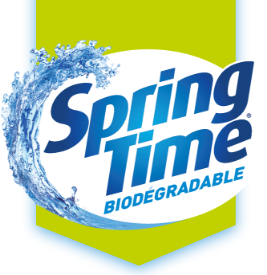Environment
BIODEGRADABILITY
Biodegradability is the ability of a substance to break down by the action of microorganisms; a biodegradable product is less likely to harm the environment.
Although, in absolute terms, this characteristic can apply to most known substances, according to an internationally recognized and accepted standard, a product is only considered biodegradable if it is likely to break down by the action of microorganisms in precise conditions and within a determined period. Some internationally recognized organizations, such as the Organization for Economic Co-operation and Development, OECD1, have developed and published methods that determine whether a substance can be classified as biodegradable. Therefore, to be recognized as biodegradable, a substance must have been submitted to a universally recognized method for determining biodegradability.
We formulated our detergents by choosing raw materials already deemed to be biodegradable and which offered a greater chance of resulting in a similar formula.
Accordingly, our detergents comply with OECD 301D test norms, which stipulate that a substance is considered biodegradable if 60% of it biodegrades within 28 days. Therefore, this is a fairly reliable indication that complete decomposition is not too far in the future.
RECYCLING
We chose to use a completely recyclable container, since we believe this alternative can help the environment by reducing the amount of waste sent to landfill sites.
The label, cap, pouring spout, plastic bottle and shipping carton are all recyclable. However, before recycling the container, you can be even more environmentally friendly by using it for other applications.
Here are some examples of how plastic is reused when sent for recycling: Shopping and garbage bags, containers and covers for non-food products, garden furniture, polar fleece clothing, toys, flower pots, urban furniture, fencing, rain boots, etc.
Tips
To remove stains from most clothing, nothing works better than Springtime detergents:
- Apply a small amount of detergent directly to the soiled area.
- Rub gently.
- Wash immediately (to avoid residue).
Other ideas:
Always make sure the stain has been removed before drying. A machine-dried stain will be more difficult to remove later. If the stain persists after a first washing, soak again in washing liquid or apply it directly to the stain, rub and repeat the washing.
FAQ
Why were biodegradable plastics not used for the Springtime detergent containers?
A plastic is considered biodegradable if it decomposes by the action of microorganisms when in contact with oxygen in the air. However, sending biodegradable plastic bottles to landfill sites would not be an ecological approach, since the volume of waste is too great for the plastic to be in contact with the elements necessary for its decomposition. In addition, commercially available biodegradable resins carry a risk of reacting with the liquid detergents, which is not desirable.
For this reason, Lavo recommends reusing containers for various uses or recycling them to promote a healthier environment.
Do you test your products on animals?
No, we do not test any of our products on animals, neither in our manufacturing plant nor in our external laboratories.
Are your products dangerous for septic tanks?
If you use the product as recommended, there is no danger. Usually, products are used and mixed with water before going in your septic tank. Thus, the product is considerably diluted and represents a very low concentration that is safe for the bacteria.
Do Springtime detergents have an expiration date?
Springtime detergents don’t have an expiration date. However, it should be noted that over a long period, it could lose some of its initial qualities. For long-lasting cleaning power, always keep your detergent in a dry place at moderate temperatures.
